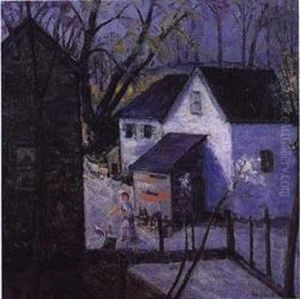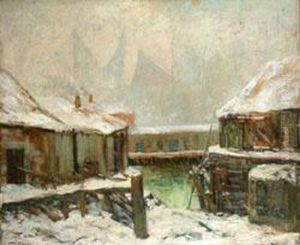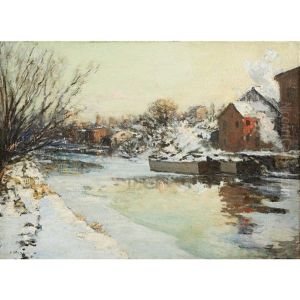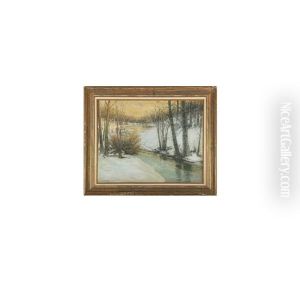Fred Wagner Paintings
Fred Wagner was an American painter, born in Port Kennedy, Pennsylvania, in 1860. He grew up in a time when America was undergoing significant changes, both socially and industrially, which would later be reflected in his art. Wagner developed an interest in art at an early age, eventually moving to Philadelphia to pursue his passion more seriously. He studied at the Pennsylvania Academy of the Fine Arts under the tutelage of Thomas Eakins, a prominent figure in American art who had a significant influence on Wagner's development as an artist.
Wagner's early work primarily focused on landscapes and urban scenes, capturing the bustling life of Philadelphia and its surroundings. He was particularly known for his impressionistic approach, characterized by loose brushwork and a vibrant palette, which allowed him to capture the fleeting moments of everyday life with a remarkable sense of immediacy and vitality. His paintings often depicted the industrial landscapes of the early 20th century, including railways, factories, and street scenes, which were becoming an increasingly prominent feature of the American landscape.
In addition to his landscapes, Wagner also gained recognition for his marine paintings. He spent a considerable amount of time in Gloucester, Massachusetts, where he was drawn to the interaction between the sea and the human activities around it, such as fishing and shipping. These works are notable for their dynamic composition and ability to convey the mood of the sea and sky.
Throughout his career, Wagner exhibited his work widely, including at the Pennsylvania Academy of the Fine Arts, the Art Institute of Chicago, and the National Academy of Design, among others. Despite the changing trends in art throughout his lifetime, Wagner remained committed to his impressionistic style, which earned him a dedicated following and respect among his peers.
Fred Wagner's contribution to American art is significant, particularly in his depiction of the early industrial and maritime scenes, which serve as valuable historical records of that era. He passed away in 1940, leaving behind a body of work that continues to be admired for its vibrancy, technical skill, and unique perspective on American life at the turn of the century.



